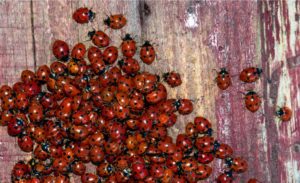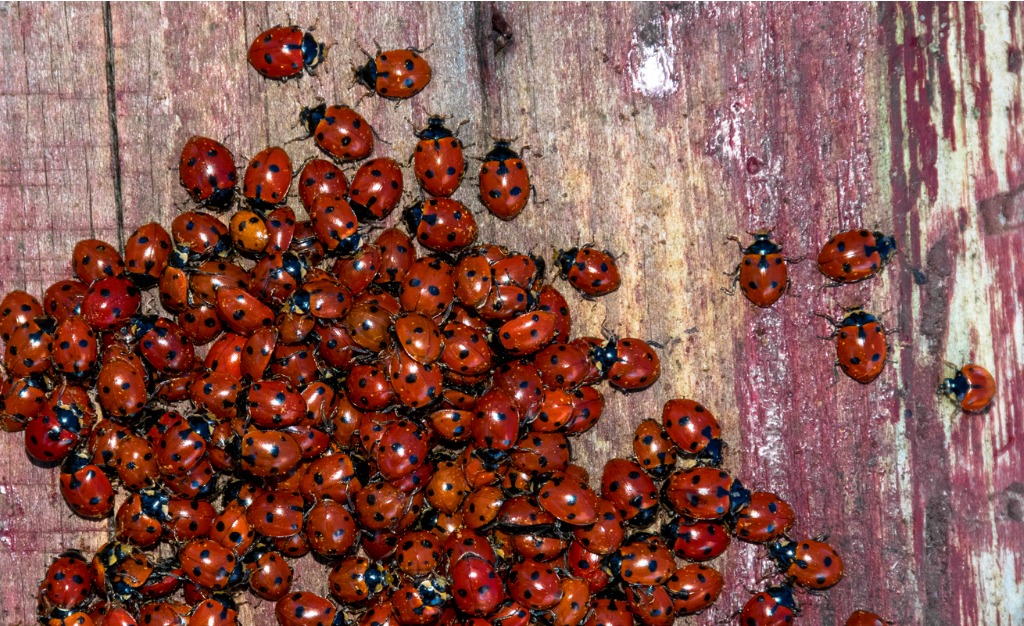Greetings, ABC Wildlife readers! I’m here to answer some of our most frequently asked questions about “occasional invaders.” Occasional invaders are insects that migrate into buildings during seasonal changes, and since we’re right between summer and fall, I figured now is the best time to talk about them. I’m going to focus specifically on bug control for boxelder bugs and lady beetles (aka ladybugs, convergent lady beetles, Asian lady beetles, ladybirds, etc.), since they’re most common this time of year.
Are boxelder bugs and lady beetles dangerous?
Unless you’re an aphid (a tiny, sap-sucking insect) or a seed, boxelder bugs and lady beetles are completely harmless. I realize they can be a bit creepy, especially in large numbers and especially when they get inside your house, but really, they’re just annoying. Check out this incredible video our office administrator, Anna, took of a boxelder bug-infested elm tree stump in her back yard.
Why are they on the side of my house, and why are there so many of them?

How do I keep them from getting inside?
I’m glad you asked! The best form of bug control is prevention, prevention, prevention. Boxelder bugs usually live underneath the bark of boxelder and silver maple trees and feed on seeds. To them, a house is just a very large, unseasonably warm tree. If there’s a way for them to get inside, they’ll find it. They key is to remove these entrance points. Typical access areas are places where wires or pipes run in and out of the house, vents, and gaps caused by natural aging and settling. It’s pretty impressive how knowledgeable our ABC Wildlife technicians are about locating those tiny entrances. Our guys
Can’t you just spray the bugs to get rid of them?
We get this question a lot, and while it would be amazing if there was a magic fix-all, spraying isn’t always the most effective means of solving the problem. Like I said, the best bug control method is really prevention. If ABC Wildlife can resolve an issue without using pesticides, that’s what we aim to do. We’re conscious about the materials we use, and we believe that pesticides should be used only when all other options are exhausted. Plus, in this particular situation, spraying can lead to large populations of insects dying inside the walls of your house. In turn, this can attract other pests like mice or dermestid beetles. However, when necessary, applying a treatment to the exterior of the house is an option.
If you have a recurring insect problem in the fall, give ABC Wildlife a call at (847) 870-7175. Our pest control technicians have decades of experience handling these kinds of infestations and know the best techniques to keep you home free of pests. And if you have any questions at all about occasional invaders and bug control, let us know in the comments section!
Sharing is caring! If you’ve learned something from what you’ve read, please click one of the icons below to share this post on social media.
Karen Jesse is a wildlife writer and educator licensed by the Illinois Department of Natural Resources and the Illinois Department of Public Health in urban wildlife management and structural pest control. She enjoys hiking, telling people how cool skunks are, and opera.
Video courtesy of Anna Leonteos



